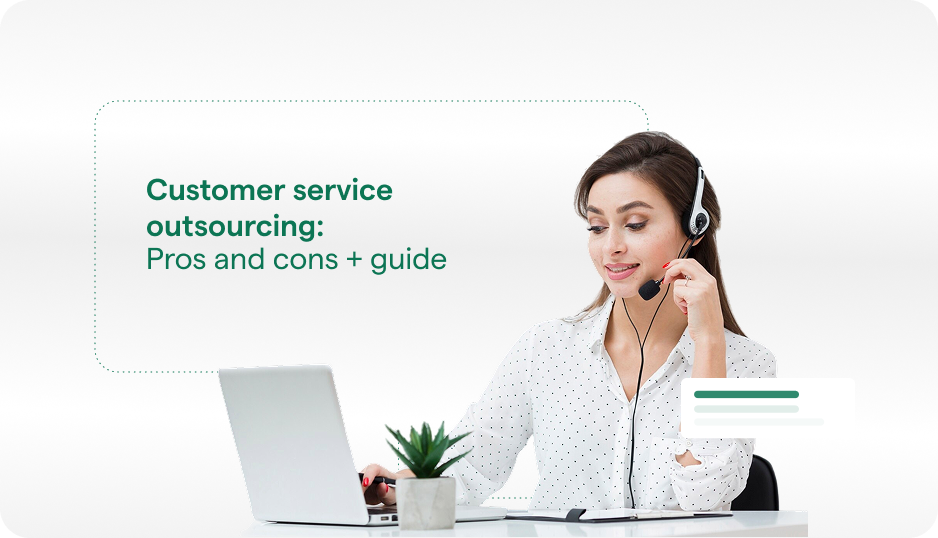Sales can’t be left to chance; that’s why most businesses have a dedicated sales department. But while there is certainly some art involved in sales, there’s quite a lot of math and science as well. After all, it’s hard to improve or even assess sales effectiveness if nothing is done consistently. And that’s why the sales cycle was invented.
What is a sales cycle? It’s the steps that salespeople take to find and convert new customers. Usually, this cycle has 7 stages:
- Finding new leads.
- Connecting with leads.
- Changing leads to prospects (e.g. qualifying leads).
- Pitching your company as a solution to a prospect’s needs.
- Responding to prospects’ feedback and objections.
- Closing the deal.
- Onboarding and nurturing new customers.
Why Is The Sales Cycle So Important?
A sales cycle is more than an arbitrary process. It provides several tangible benefits, including:
- It reduces uncertainty. Reps and teams know what to do next; they simply follow the stages of the sales cycle.
- It helps individual reps understand where the lead or prospect is in the buying process and tailor their approach accordingly.
- It helps teams work together. If a rep needs to take over for another rep, they’ll know exactly what to do based on the lead’s stage in the sales cycle.
- It’s measurable. Sales cycles that are too long can indicate an inefficiency in the sales process. And because each step in the cycle is clear, it’s easier to narrow down where the problem is occurring.
- It lets you see what’s successful – and how to repeat that success in the future.
The Difference Between B2B And B2C Sales Cycles
Both B2B and B2C businesses have sales cycles, and both cycles follow roughly the same process. However, there are some major differences:
- The B2B sales cycle tends to be considerably longer. This is because there are usually more stakeholders involved, prices are more substantial, and the offer is much higher. It also takes longer to research leads and build a relationship.
- The B2C sales cycle is (generally speaking) simpler. Compare buying a single package of printer paper to buying enough paper to run a company for six months. There are far fewer factors involved in the B2C sale. Communication between the customer and the seller is usually limited to a few interactions; for the B2B sale, there may be many rounds of questions, offers, bargains, and approvals.
Sales Cycle Lengths
As you can see from the above B2B vs. B2C comparison, sales cycle lengths can vary dramatically depending on the audience, product/service, and industry. (For example, compare the B2C paper-buying process with the B2C home-buying process!)
Sales cycles can be measured in days, weeks, or months. In some sectors, a few weeks is a normal sales cycle. In others, 6-9 months is normal. When comparing your sales cycle, it’s important to use a specific benchmark (such as the averages for your industry, segment, and market) instead of a broad generalization.
Sales Cycle Stages
Now that we know how important a sales cycle is, let’s look at each of the stages.
- Lead generation – First, define your offering: what does your product/service do better than anyone else? Who would need it? What problem does it solve? Next, look for potential buyers by scouting LinkedIn and other social media, creating lead-generating web content and videos, looking at news articles, etc. Make a list of targets, and find out what problems you can help them overcome with your offering.
- Connect – Make your first contact with the lead. This is popularly done over email or social media. At this stage, don’t get salesy; the best practice is to identify yourself briefly, mention a problem or current newsworthy event, and share something the lead will find valuable, like a link to a free ebook, blog post, or webinar on a relevant topic.
- Research and Qualify Leads – If the lead follows up on your message, they’ve become a prospect. Now is the time to learn more about their company and its needs. You can do this via a phone call, introductory meeting, etc. This is when you verify you’re talking to the right person (e.g. the purchasing manager instead of an office assistant). You may also do additional research at this point to get a deep background on what your prospect is facing.
- Present your pitch – Armed with your knowledge, you can prepare and present your best and most relevant offer to the prospect. This is usually done via a virtual/in-person meeting, but written offers are also common.
- Respond to feedback and objections – Your prospects will almost certainly have questions or concerns about your offer. Maybe they bring up budget issues, talk about their existing solution, or try to strike a better deal. Ideally, you’ve prepared beforehand for with the usual objections. In any case, highlight the value of your offering.
- Close – It worked! You’ve reached a deal! All the details have been finalized, your prospect signed on the bottom line, and you’ve converted a new customer. BUt your job isn’t done.
- Onboard and nurture the new customer – It’s critical to support new customers and keep them happy. Onboarding – helping the customer get set up with their new purchase, showing them how to get the most out of it if necessary, and troubleshooting any initial problems – is crucial at this stage. Continue periodically checking in with customers to see if there are any problems you can address. After a successful onboarding process, you can also politely ask for referrals from the customer.
Optimizing the Sales Cycle Process
As you can see, the sales cycle is a multi-step process, and each step can be refined. That means there is a lot of room for optimization. Let’s look at just a few things that can help you get the most out of your sales cycle as a whole.
Track the Numbers
One of the great things about sales cycles is that they are measurable – they produce metrics like conversion rates and cycle lengths, as we discussed above. You can compare your general cycle length and overall conversion rates against industry benchmarks, but you can also compare them from stage to stage. If certain stages take much longer than other stages in your sales cycle, it can be a hint that things need optimizing in that particular area. And the same thing goes for conversion metrics; if your lead-to-prospect conversion rate is low but your prospect-to-customer rate is high, it’s clear which area needs attention.
Use Customer Relationship Management (CRM) Software
CRM systems keep track of your interactions with contacts and clients. They also store all your information in one place (and keep it organized).
A prospect who’s not ready to convert to a lead – or a lead who’s not ready to purchase yet – is not a lost cause. They can be contacted in the future; things might well have changed. A CRM lets you avoid duplicating all your previous research in this area. It also helps you see your contact history with current clients, allowing you to provide more personalized service.
Focus On High-Value Tasks
Automated tools let sales and customer service teams save a lot of time and effort. By automating rote tasks, human reps can spend more time connecting with prospects, nurturing high value leads and selling. This not only leads to a more effective sales department, it also leads to happier, more fulfilled sales reps.
Invest in Good Customer Service
Simply put, happy prospects and valued customers = more sales. Customer service is an often underestimated element of sales, but in actual fact it is a key component of every stage of the sales cycle.
Customer service can essentially make or break an experience, acting as a deciding factor in a prospect’s purchasing decision. Companies should thus ensure their customer service journey is as efficient and effective as possible for their customers, both new and old. How? By ensuring teams are well-trained and knowledgeable and by leveraging technology like helpbots to automate where it counts. This can also empower customers to self-serve by solving their own common issues even faster.
Ensure Alignment Between Teams
Finally, a sales cycle is great at keeping people on the same page, process-wise. However, reps also need to be aware of team and company goals. Having a unified focus helps everyone become more targeted in their efforts – both within the sales department and outside of it.
Helpshift Sales Cycle Resources:
Product: Automated Chat
Product: Customer Service Helpbots
Glossary: What is Customer Onboarding?
Glossary: What is Customer Acquisition?
Glossary: What is Customer Service Automation?



